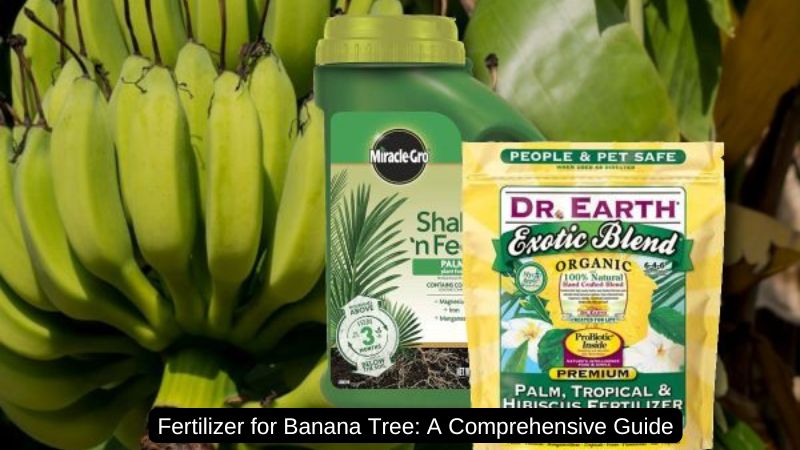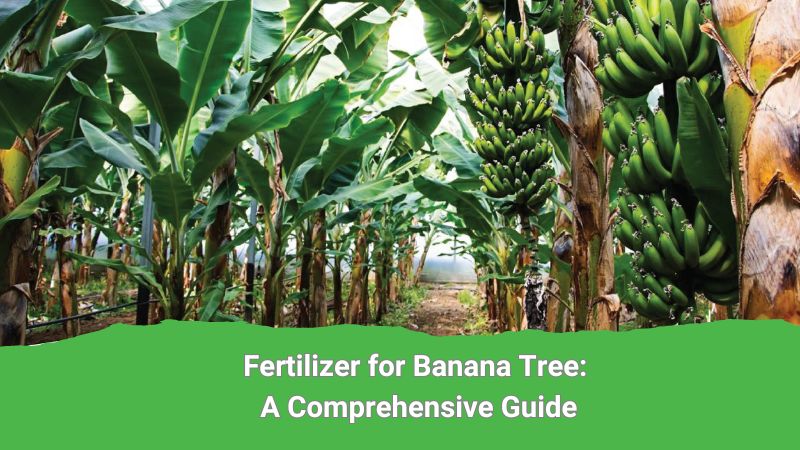Banana trees, known for their lush foliage and sweet fruit, thrive in tropical climates and are a popular choice for home gardens. However, to achieve a bountiful harvest, it’s crucial to provide them with the right nutrients. In this article, Garden 03 will delve into everything you need to know about fertilizer for banana trees, including types, application methods, and tips for optimal growth.
1. Understanding the Nutritional Needs of Banana Trees
Banana trees require a balanced diet of essential nutrients to grow healthy and produce fruit. The primary nutrients they need are:
- Nitrogen (N): Vital for leaf growth and overall plant health.
- Phosphorus (P): Supports root development and flowering.
- Potassium (K): Essential for fruit quality and disease resistance.
In addition to these macronutrients, banana trees also benefit from micronutrients like magnesium, calcium, and sulfur. A well-balanced fertilizer can help ensure that these needs are met.
2. Choosing the Right Fertilizer for Banana Trees

When selecting a fertilizer for banana trees, consider the following options:
2.1. Organic Fertilizers
Organic fertilizers are derived from natural sources and are an excellent choice for those looking to cultivate banana trees sustainably. Some popular organic options include:
- Compost: Rich in nutrients, compost improves soil structure and enhances microbial activity.
- Manure: Well-rotted manure provides a slow release of nutrients and increases soil fertility.
- Bone Meal: High in phosphorus, bone meal promotes root and flower development.
2.2. Synthetic Fertilizers
Synthetic fertilizers offer a concentrated source of nutrients and can be tailored to the specific needs of banana trees. Look for fertilizers with an N-P-K ratio of 8-10-10 or similar, as these ratios are effective for promoting healthy growth and fruit production.
3. Application of Fertilizer for Banana Trees
Proper application of fertilizer is crucial for maximizing the health and yield of banana trees. Here’s how to do it:
3.1. Timing
- Initial Planting: Apply a balanced fertilizer at the time of planting to provide immediate nutrients.
- Growing Season: Fertilize every 6-8 weeks during the growing season (spring and summer) to support ongoing growth.
3.2. Method
- Soil Application: Spread the fertilizer evenly around the base of the plant, avoiding direct contact with the stem. Water thoroughly to help the nutrients penetrate the soil.
- Foliar Feeding: A liquid fertilizer can be applied directly to the leaves for quick nutrient absorption, especially during periods of rapid growth.
4. Signs of Nutrient Deficiency
Monitoring your banana trees for signs of nutrient deficiency is vital for timely intervention. Common symptoms include:
- Yellowing Leaves: Indicates nitrogen deficiency.
- Poor Root Development: May signal a lack of phosphorus.
- Small or Undersized Fruit: Often a result of potassium deficiency.
If you observe these signs, consider adjusting your fertilization strategy to address the specific nutrient lacking.
5. Soil Considerations for Banana Trees
The type of soil in which banana trees are planted can significantly impact their growth. Ideal soil conditions include:
- Well-draining Soil: Banana trees prefer loose, well-aerated soil to prevent root rot.
- pH Levels: A slightly acidic to neutral pH (5.5-7.0) is ideal for nutrient uptake.
Amending the soil with organic matter can improve fertility and drainage, making it more conducive to banana tree growth.
6. Common Mistakes in Fertilizing Banana Trees
Avoiding common fertilization mistakes can help ensure your banana trees thrive:
- Over-Fertilization: Too much fertilizer can lead to nutrient burn. Follow the recommended application rates.
- Ignoring Soil Tests: Regular soil tests can help you understand the nutrient composition and pH, allowing for more precise fertilization.
- Neglecting Watering: Ensure that banana trees receive adequate water after fertilizing to help nutrients reach the roots.
7. Sustainable Practices for Fertilizing Banana Trees
Embracing sustainable fertilization practices can lead to healthier plants and a more productive garden. Consider these approaches:
- Crop Rotation: Rotating banana trees with other crops can help replenish soil nutrients naturally.
- Cover Cropping: Planting cover crops can enhance soil fertility and structure while suppressing weeds.
- Mulching: Organic mulch helps retain moisture, suppress weeds, and add nutrients as it breaks down.
8. Conclusion
Fertilizing banana trees properly is essential for their health and productivity. By understanding their nutritional needs and choosing the right fertilizer, you can cultivate thriving banana trees that produce delicious fruit. Remember to monitor for signs of nutrient deficiency and adjust your fertilization practices accordingly. With the right care and attention, your banana trees will flourish, providing you with abundant harvests for years to come.
By following this comprehensive guide on fertilizer for banana trees, you can ensure your plants receive the nutrients they need to thrive. Whether you choose organic or synthetic options, proper application and attention to soil conditions will set the stage for a fruitful garden. Happy gardening!





